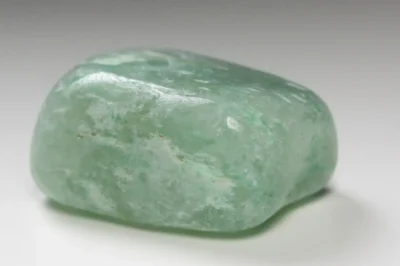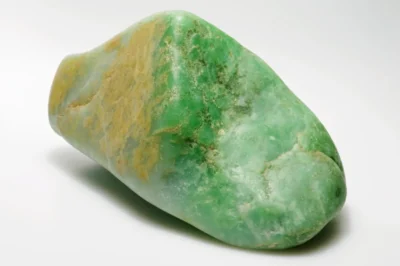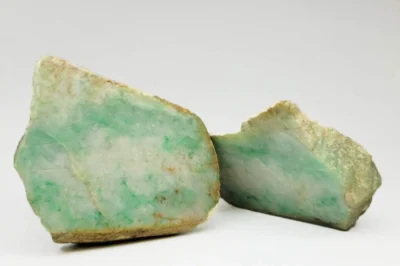Jade has fascinated people for thousands of years. Its smooth texture, vibrant colors, and rich cultural history make it one of the most treasured gemstones in the world. Yet, if you’ve ever shopped for jade jewelry or collectibles, you may have noticed terms like jadeite and nephrite—leaving you wondering: what exactly is the difference between jadeite and jade?
In this comprehensive guide, we’ll dive deep into Jadeite, explore its characteristics, compare it with other types of jade, and explain how to identify, value, and care for jadeite jewelry. By the end of this article, you’ll have all the knowledge you need to navigate the fascinating world of jade with confidence.
What is Jade? A Quick Overview
Jade is a term that refers to two distinct gemstones: jadeite and nephrite. Both have a similar appearance and cultural significance but differ in chemical composition, texture, and rarity.
Historically, jade has held a special place in many cultures:
- China: Jade symbolizes purity, protection, and status. It has been used in ceremonial objects, jewelry, and even burial suits for royalty.
- Mesoamerica: Jade represented life, fertility, and spiritual power. Civilizations like the Maya and Aztecs carved jade into masks, figurines, and ceremonial tools.
- New Zealand: Nephrite jade, called pounamu, is treasured by the Māori as a symbol of strength, heritage, and spirituality.
Today, jade remains a prized gemstone in jewelry, carvings, and decorative art, blending timeless beauty with rich cultural symbolism.
Among these, Jadeite stands out as the most luxurious and rare type of jade, often commanding premium prices and worldwide recognition among collectors.
Jadeite vs Jade: Understanding the Difference
While the word “jade” is often used broadly, it can refer to either jadeite or nephrite. The distinction between these two is crucial, especially for collectors, investors, and jewelry enthusiasts.
Composition and Mineral Structure
Jadeite and nephrite differ chemically and structurally:
- Jadeite: A sodium aluminum silicate, jadeite has a granular, crystalline structure. This gives jadeite its distinctive translucency and allows it to achieve vivid colors not typically found in nephrite.
- Nephrite: A calcium magnesium silicate, nephrite has a fibrous structure, which makes it incredibly tough but usually less translucent than jadeite.
Jadeite’s crystalline structure is one reason it’s considered the most luxurious jade type, highly prized in high-end jewelry and for collectors seeking rare gemstones.
Color Variations
Color is one of the most noticeable differences between jadeite and other types of jade.
- Jadeite: Offers a wide range of colors, including vibrant green, lavender, white, orange, yellow, and even black. The most coveted is imperial green jadeite, which is highly translucent and rich in color.
- Nephrite: Colors are usually more subdued, ranging from emerald green to creamy white, with occasional brown or gray-green tones.
For jade collectors and jewelry enthusiasts, color intensity and evenness are key indicators of quality. Jadeite, with its vibrant hues, often commands higher prices.
Hardness and Durability
Both jadeite and nephrite are exceptionally tough, but their hardness differs slightly:
- Jadeite: 6.5 – 7 on the Mohs scale
- Nephrite: 6 – 6.5 on the Mohs scale
Jadeite’s slightly higher hardness makes it ideal for fine jewelry and intricate carvings, while nephrite’s fibrous structure makes it nearly unbreakable, perfect for larger ornamental pieces.
Geographic Origins
The origin of jadeite significantly influences its quality and value:
- Jadeite: Primarily sourced from Myanmar (Burma), with additional deposits in Guatemala, Japan, and the United States. Myanmar jadeite is considered the highest quality.
- Nephrite: Found in China, Russia, Canada, and New Zealand. Historically, nephrite was the jade of choice for Chinese ceremonial carvings.
Understanding origin helps buyers assess both rarity and investment potential, especially for jadeite.
How to Identify Jadeite
Knowing how to identify genuine jadeite is essential for any collector or buyer. Here’s a detailed guide:
Visual Inspection
Jadeite is known for its translucent, glass-like quality:
- High-quality jadeite appears bright and glowing, even under subtle light.
- Look for fine, dense granules in the stone’s texture, a hallmark of authentic jadeite.
- Avoid pieces with unnatural-looking colors or uneven pigmentation, as these may indicate dyeing or treatment.
Weight and Feel
Genuine jadeite feels distinct in hand:
- Jadeite is dense and smooth, with a slightly cool touch.
- Nephrite, by contrast, feels a bit softer and waxy.
This tactile assessment, combined with visual inspection, can help differentiate jadeite from other types of jade.
Professional Testing
For high-value jadeite, professional gemological tests are recommended:
- Refractometer Test: Measures light refraction to identify jadeite.
- Spectroscopy: Confirms mineral composition and detects treatments.
- Certification: A gemological certificate ensures authenticity and protects your investment.
High-end jadeite jewelry and rare carvings should always come with certification to guarantee quality.
Common Imitations and Treatments
Jadeite is sometimes imitated or enhanced to increase apparent value:
- Dyed Jadeite: Low-quality stones may be dyed to enhance color.
- Polymer-Impregnated Jadeite: Used to improve translucency and durability.
- Glass or Other Minerals: Some items labeled as jadeite may actually be glass or other minerals.
Buying from trusted sources and requesting certification reduces the risk of purchasing treated or fake jadeite.
Jadeite vs Jade: Value and Investment
Jadeite is the most valuable type of jade, often surpassing nephrite in price and investment potential.
- Imperial Green Jadeite: The rarest and most sought-after jadeite color, commanding premium prices in the market.
- Factors Affecting Value:
- Color: Vivid and even tones are highly prized.
- Clarity: Minimal inclusions or imperfections increase value.
- Size: Larger jadeite stones are rarer and more expensive.
- Origin: Myanmar jadeite is especially valuable, while other origins can affect price.
Investors often prefer jadeite due to its rarity, vibrant color range, and long-term appreciation potential.
Popular Jadeite Jewelry Pieces
Jadeite is highly versatile in jewelry, appreciated for both beauty and cultural significance:
- Bangles & Bracelets: Particularly prized in Chinese culture; jadeite bangles are valued for translucency and vibrant color.
- Necklaces & Pendants: Beaded jadeite necklaces are popular worldwide; pendants often showcase the natural beauty of jadeite.
- Rings: Simple settings highlight the gem’s natural glow and color.
- Carvings & Sculptures: Jadeite carvings are treasured as art pieces and collector items.
Whether in jewelry or ornamental art, jadeite’s unique glow and rarity make it highly sought after.
Caring for Jadeite Jewelry
Jadeite is durable, but proper care ensures lasting beauty:
- Cleaning: Use mild soap and warm water. Avoid harsh chemicals.
- Storage: Keep jadeite separate from harder gemstones to prevent scratches.
- Avoid Heat & Impact: Extreme temperatures or drops can damage jadeite.
- Polishing: Professional polishing maintains luster without risking damage.
With proper care, jadeite jewelry can remain vibrant and beautiful for generations.
Cultural Significance of Jadeite
Jadeite holds deep cultural meaning around the world:
- China: Jadeite is considered a symbol of purity, protection, and status. Jadeite jewelry is often passed down as family heirlooms.
- Mesoamerica: Though jadeite was less common than nephrite, it was still valued for ritual objects and personal adornment.
- Modern Collectors: Jadeite is prized for both its aesthetic appeal and investment potential, often featured in luxury jewelry markets globally.
Its rich history adds intangible value, making jadeite not just a gemstone but a cultural artifact.
Tips for Buying Jadeite
When shopping for jadeite, consider the following:
- Understand Types of Jade: Know the difference between jadeite and nephrite.
- Check Authenticity: Request gemological certification for high-value jadeite.
- Assess Color and Transparency: Look for vivid, even colors and translucency.
- Consider Origin: Myanmar jadeite is particularly rare and valuable.
- Buy from Reputable Sources: Avoid treated, dyed, or fake jadeite by purchasing from trusted jewelers.
These steps ensure that your jadeite purchase is both authentic and valuable.
Jadeite vs Nephrite Comparison Table
| Feature | Jadeite | Nephrite |
| Composition | Sodium Aluminum Silicate | Calcium Magnesium Silicate |
| Hardness | 6.5 – 7 | 6 – 6.5 |
| Color Range | Green, Lavender, White, Orange, Yellow, Black | Green, Creamy White, Brown, Gray-Green |
| Transparency | More translucent | More opaque |
| Luster | Glassy, glowing | Waxy, soft |
| Rarity | Rare, high-value | Common, moderately valuable |
| Origin | Myanmar, Guatemala | China, Russia, Canada |
Making the Right Choice: Jadeite or Nephrite?
Whether to choose jadeite or nephrite depends on your priorities:
- For collectors and investors: Jadeite, particularly imperial green, offers rarity and potential appreciation.
- For everyday wear or cultural purposes: Nephrite is durable, beautiful, and more affordable.
Regardless of choice, focus on authenticity, quality, and personal preference. Both gemstones offer timeless beauty, cultural significance, and durability.
Conclusion
Jadeite is more than just a gemstone—it’s a symbol of culture, history, and artistry. Understanding its differences from other types of jade helps buyers make informed decisions, protect investments, and appreciate the true value of this magnificent stone.
Whether you’re drawn to the luxurious glow of jadeite or the classic appeal of nephrite, owning jade connects you to thousands of years of human history and craftsmanship. By knowing how to identify, value, and care for jadeite, you can confidently explore the world of jade jewelry and collectibles.






